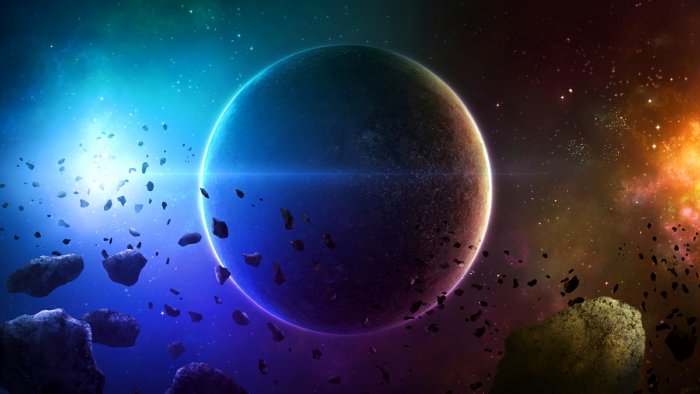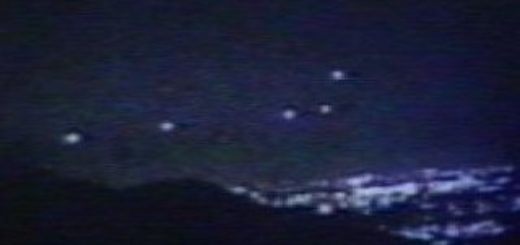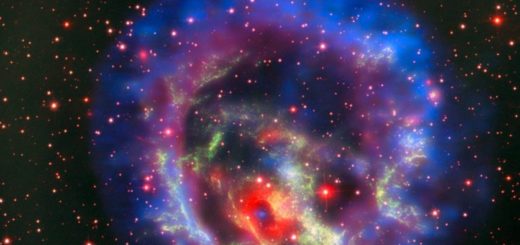World’s Oldest Meteorite From An Unknown Extraterrestrial Source Has Very Unusual Composition
Scientists have examined a beautiful light-green meteorite that is very unusual due to its age and strange composition. It has been dated to a period when the solar system was formed, about 4.6 billion years ago.
The meteorite comes from an unknown extraterrestrial source, possibly a very large, geologically complex body that formed in the early solar system.
Scientists believe that our solar system was born when a cloud of gas and dust collapsed under gravity possibly triggered by cataclysmic explosion from a nearby massive star or supernova.
As this cloud collapsed, it formed a spinning disk with the sun in the center.
Solar System Formation

University of New Mexico
Known as NWA 11119, the meteorite discovered in a sand dune in Mauritania by a nomad. Later it was given to a meteorite dealer who in turn offered it to Professor and Director of the Institute of Meteoritics Carl Agee. Poorna Srinivasan, a graduate student and lead author of the study has some surprising information that may shed new light on our knowledge of meteorites, asteroids and early solar system.
“The age of this meteorite is the oldest, igneous meteorite ever recorded,” said Professor Agee said in a press release. “Not only is this just an extremely unusual rock type, it’s telling us that not all asteroids look the same. Some of them look almost like the crust of the Earth because they’re so light colored and full of SiO2. These not only exist, but it occurred during one of the very first volcanic events to take place in the solar system.”
The composition of this unusual light-green fusion crust, silica mineral-rich achondrite meteorite is intriguing.
The mineralogy of this rock is a very, very different from anything that we’ve worked on before,” said Srinivasan. “I examined the mineralogy to understand all of the phases that comprise the meteorite. One of the main things we saw first were the large silica crystals of tridymite which is a similar to the mineral quartz. When we conducted further image analyses to quantify the tridymite, we found that the amount present was a staggering 30 percent of the total meteorite — this amount is unheard of in meteorites and is only found at these levels in certain volcanic rocks from the Earth.”
NWA 11119 is an unusual light-green fusion crust, silica mineral-rich achondrite meteorite. Credit: UNM Institute of Meteoritics
NWA 11119 is an unusual light-green fusion crust, silica mineral-rich achondrite meteorite.
Credit: UNM Institute of Meteoritics
Examinations of the meteorite revealed there is no doubt this object is of extraterrestrial origin.
“Based on oxygen isotopes, we know it’s from an extraterrestrial source somewhere in the solar system, but we can’t actually pinpoint it to a known body that has been viewed with a telescope,” said Srinivasan. “However, through the measured isotopic values, we were able to possibly link it to two other unusual meteorites (Northwest Africa 7235 and Almahata Sitta) suggesting that they all are from the same parent body — perhaps a large, geologically complex body that formed in the early solar system.”
See also:
Cosmic Secrets Of Asteroids And Meteorites Revealed In New Study
A 60-Million-Year-Old Meteorite Impact And Unique Minerals Never Recorded On Earth Discovered On Isle of Skye
Large Meteorite As Old As The Solar System Discovered In The Lut Desert
One possibility is that this parent body was disrupted through a collision with another asteroid or planetesimal and some of its ejected fragments eventually reached the Earth’s orbit, falling through the atmosphere and ending up as meteorites on the ground — in the case of NWA 11119, falling in Mauritania at a yet unknown time in the past.
“The oxygen isotopes of NWA11119, NWA 7235, and Almahata Sitta are all identical, but this rock — NWA 11119 — stands out as something completely different from any of the over 40,000 meteorites that have been found on Earth,” said Srinivasan.
The research, published in Nature Communications confirmed that NWA 11119 is the oldest-ever igneous meteorite recorded at 4.565 billion years.



 Creators of mankind
Creators of mankind Description of “Tall white aliens”
Description of “Tall white aliens” Where they came from?
Where they came from? About hostile civilizations
About hostile civilizations The war for the Earth
The war for the Earth “Tall white aliens” about eternal life
“Tall white aliens” about eternal life Video: “Nordic aliens”
Video: “Nordic aliens” Aliens
Aliens Alien encounters
Alien encounters The aliens base
The aliens base UFO
UFO Technology UFO
Technology UFO Underground civilization
Underground civilization Ancient alien artifacts
Ancient alien artifacts Military and UFO
Military and UFO Mysteries and hypotheses
Mysteries and hypotheses Scientific facts
Scientific facts


















